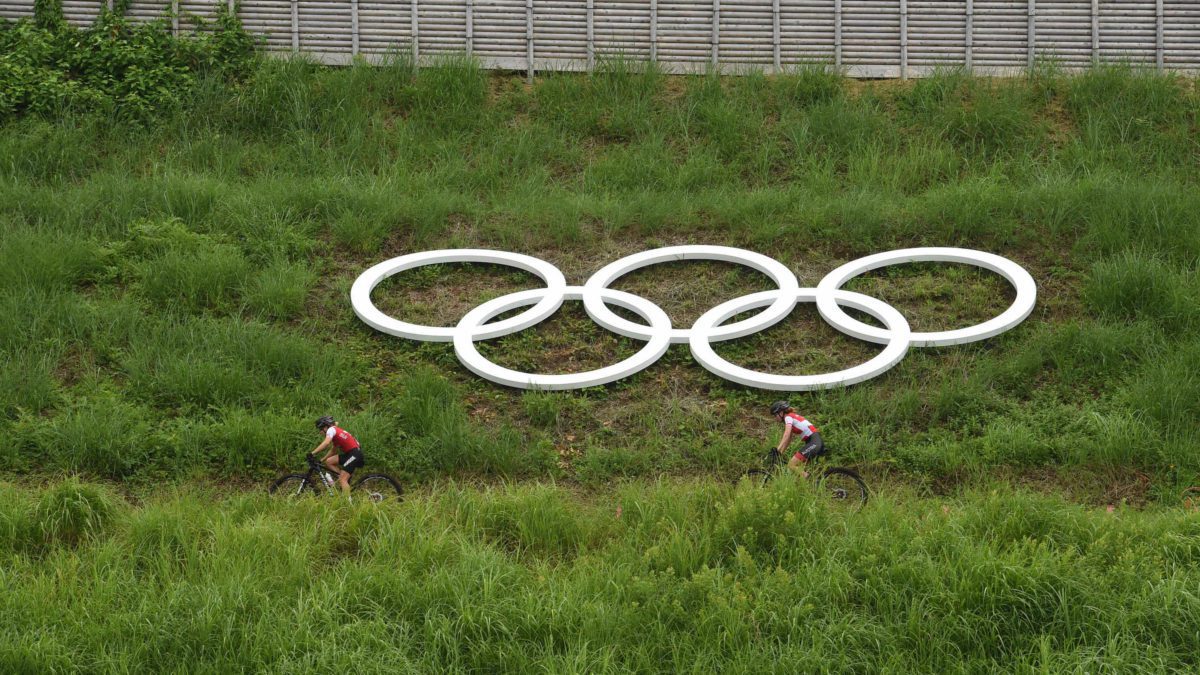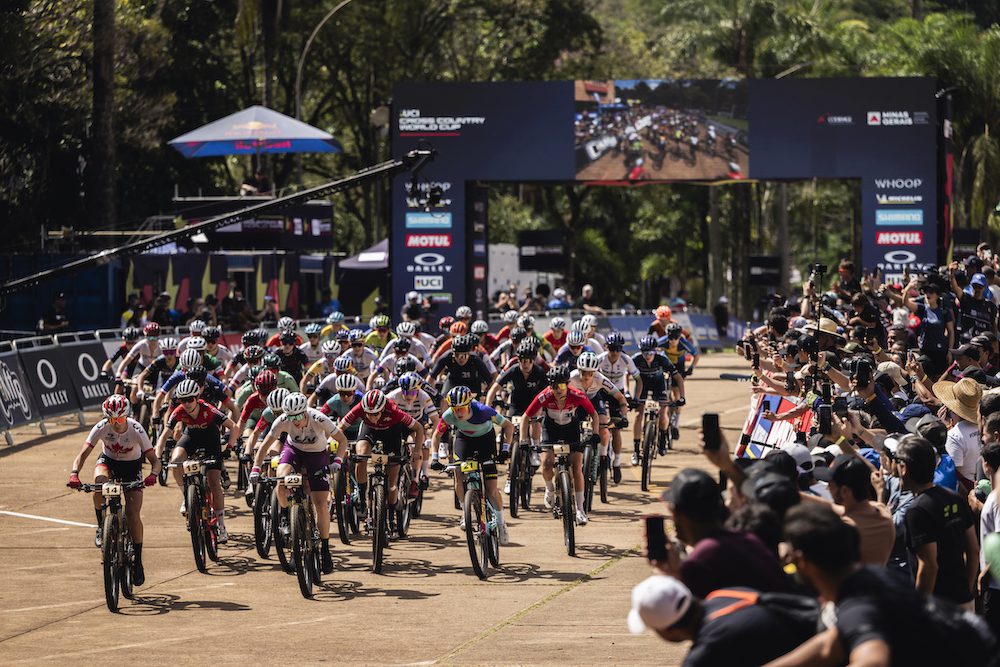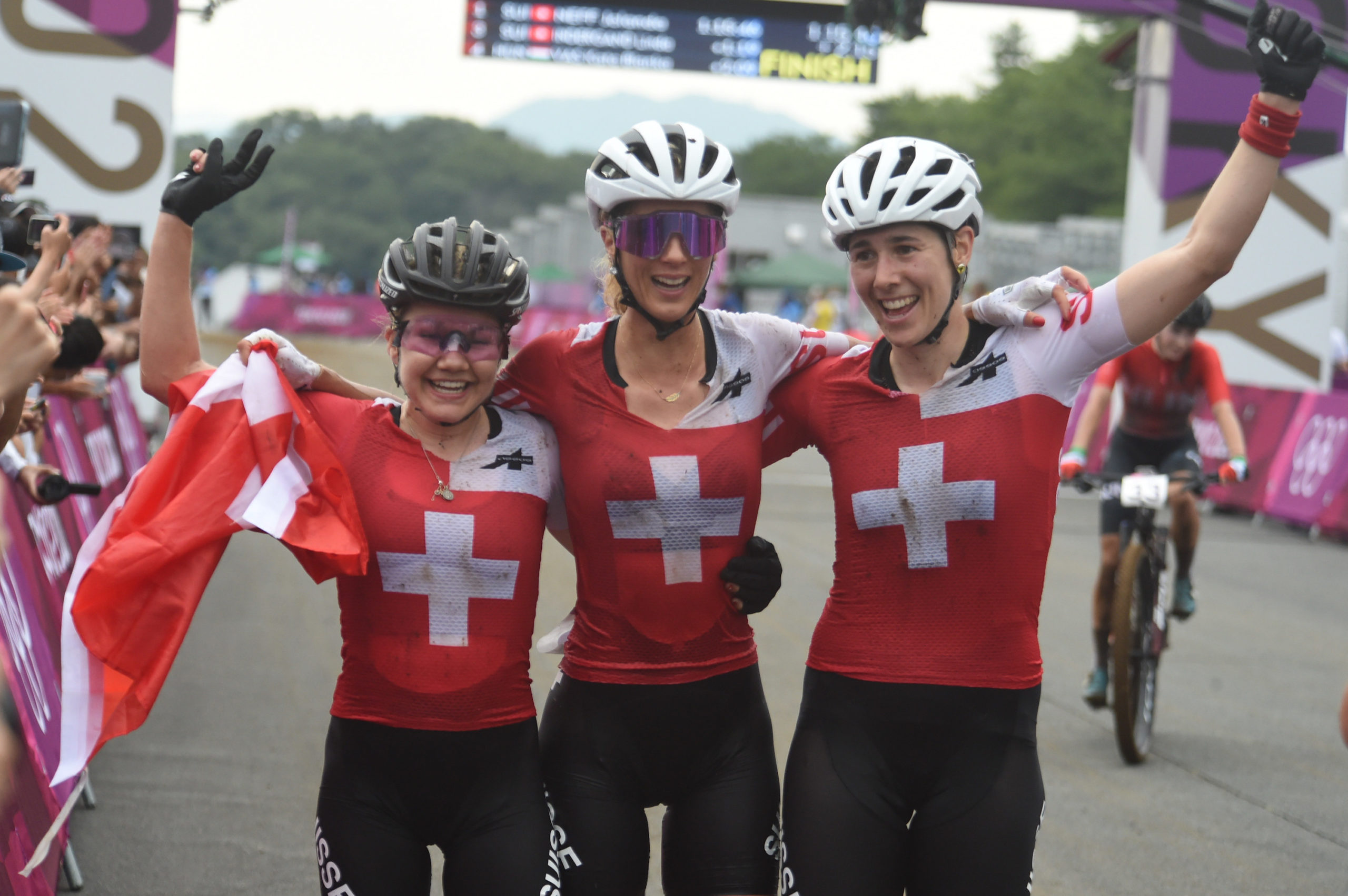Is it finally time to rethink the Olympic XCO qualification process?
Restrictive cross country quotas are getting in the way of competition
 Photo by:
Sirotti
Photo by:
Sirotti
When announcers start call-ups to the start line for the Olympic cross country mountain bike race, they should be listing off the fastest riders in the world. The 36 best men and 36 best women with the best chance at winning the race, and a coveted Olympic gold medal. But that’s not what’s going to happen. Or, at least, there will be names missing from that list.
Why? Because the UCI and IOC (cycling and the Olympic’s governing body) continue to insist on a 36-rider limit for each race in mountain biking. To get one of those spots requires a convoluted, two-year, multi-step process that is so arcane only the UCI could dream it up. We’ve covered that, briefly, and how it affects the Canadian selection already. Today, we’re talking about why that system needs to change.

Olympics vs. World Cup
The problem with the 36 rider field is two-fold. First, the breakdown of how the spots on the startling are allocated means riders are punished for being from the same country as other fast riders. Second, it severely limits the field in a way that does not really represent the mass-start nature of the sport at World Cups.
Allocation
Countries can qualify a maximum of two riders in the women’s race and two rider’s in the men’s race for a total of four riders per country. But at the first World Cup in Mairiporã, Brazil, there were four U.S. women in the top 10. Another four Swiss riders were in the top 15. If you take away two U.S. riders and two Swiss, do you still have the fastest 36 women? In the men’s race, the French had three men in the top 10, too. What’s worse is that only the eight top-ranked nations in the UCI’s national rankings get to send two riders. After that, a country only gets one spot on the start line.
How does this compare to a normal World Cup race weekend? Well, in 2023 in the Nove Mesto World Cup there were 132 elite men on the start line from 38 countries and 96 women from 29 countries. In 2024, there are 118 men from 30 countries registered for the same Czech round with 89 women from 27 countries. Even all the way over in Brazil, there were 108 women from 30 countries in Mairiporã and 66 women from 26 countries. That’s with many riders, including the likes of Pauline Ferrand-Prevot and World Cup winner Puck Pieterse, deciding the travel wasn’t worth the cost or the effect it would have on their preparation for the Olympics (more on that important point below).
For fans, that makes the 36-Olympic start line look visibly different. It arguably takes away the visual effect of a mass-start. Especially when some of those 36 riders coming from regional qualifiers really aren’t competitive.

The Tokyo Experiment: Switzerland too big in Japan?
For the 2020 games the UCI/IOC briefly experimented with allowing three riders each from the top two nations. In the women’s field, that was Switzerland and the United States. The Swiss swept the podium, led by Yolanda Neff. That rule was quickly changed back to a two-rider limit per country.
But was that the correct lesson to take away from Tokyo? Should the fourth place finisher have been given the bronze when we now know for sure there was a faster rider? How can we now watch Paris with the confidence that the fastest rider that day was allowed to make it to the start line?
I’d argue that the UCI/IOC’s response should be the opposite: allow more riders on the start line from each country. The traditional argument against this is that this would somehow “dilute” the field. But if we want to be that unnecessarily restrictive, we could just make it one rider from each country, right? I, personally, would rather it look more like a World Cup start line than less.

The destructive effect of overly restrictive qualification
It’s not just because the start line looks better with more than 36 riders. I think a larger field would make for a more fair Olympic mountain bike race. Here’s why.
After the IOC allocates spots to nations, they have to decide which riders to send. If you’re the U.S. selection committee, you have to choose between four women that all finished in the top 10 in Mairiporã. The worst-placed of those, Kate Courtney in 10th, is a past world champion.
Those four women all have the foresight to know this squeeze is coming. And they also know you can’t win a race if you don’t make it to the start line. That forces all four of them to focus their training on making it through the selection process and then dealing with the Olympics if they make it. Savilia Blunk, second in Mairiporã alluded to exactly this race-to-the-race in her post-race interview there. That means they are potentially not putting their best foot forward when the two that are selected show up in Paris.
In contrast, someone like Jenny Rissveds, with few rivals at home in Sweden, can roll into the Olympic year knowing they have an Olympic spot locked down and focus their preparations 100 per cent on the Olympic race, if they want to.
Repeating mistakes
This isn’t a new problem, it’s now two decades old at least. Look at Tokyo again. The U.S. women were very focused on earning three qualification spots leading into that year. But the best any of the three placed was a ninth from Haley Batten. Further back, the documentary Off Road to Athens highlights how the race to try qualify for the 2004 Olympics ended up distracting from the race itself. The convoluted U.S. selection process compounded the effect of the UCI’s qualification process. But the U.S. riders (and selectors) wouldn’t be forced into that position if the Olympic quotas weren’t so overly tight.
This isn’t just a U.S. problem, of course. Canada’s had its own selection stresses in the past. The French have tough choices to make coming into their home Olympics. The Swiss face this crunch every Olympic cycle.
Do I have a solution beyond saying there should be “more” riders on the start line in Paris? No, not really. And I’ll admit the best answer probably lies somewhere between the 36 men and women that will start in Paris and the 100+ riders that register for most World Cup rounds. The Olympics are special and that does require some kind of whittling down of the field. But it absolutely not require a diluting or weakening of the field, as is happening now.
The problem is simple. Isn’t the Olympics, as the peak of the sport, about giving the best and fastest the opportunity to show themselves? Why would we want a podium that might not include the fastest riders in the world?
